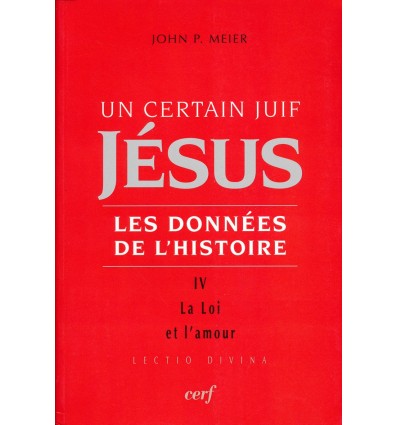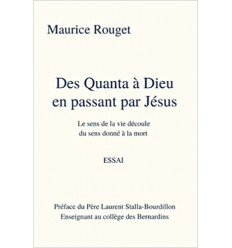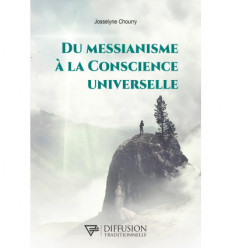Humanism • Spirituality • Well-being
-
0
Product
Products
No products
To be determined
Shipping
0,00 €
Total
Prices are tax included
Product successfully added to your shopping cart
Quantity
Total
There are 0 items in your cart. There is 1 item in your cart.
Total products
(tax incl.)
Total shipping (tax incl.)
To be determined
Un certain juif Jésus – Tome 4
HISTOIRE LA LOI D AMOUR
A remarkable historical study of Jesus
1 Item
In stock Delivery 2 to 4 days
Description
With this work, the American scholar John P. Meier continues his great research project: rethinking the historical figure of Jesus. By applying the methods and criteria of historical science, the author undertakes to paint a reasonably accurate portrait of the historical figure of Jesus. A gripping study, of unmatched academic rigour.
Three volumes are already available. J.P.M. Started by solely considering Jesus in his context and looking at his early years (vol. 1), then he continued to the preaching of the Reign of God and the miracles (vol. 2); lastly, he described the human environment of Jesus, his relationships with the individuals and groups that interacted with him (vol. 3). In this fourth volume: The Law of love, J.P.M. Approaches the relationship between Jesus and Jewish law: what was Jesus’ understanding of Judaism and the Torah?
From the outset, J.P.M. Warns us: this is a difficult question and has given rise to extreme positions: for some, Jesus opposed the law, while for others this was in almost no way true. He moves away from these opinions and states that Jesus was an integral part of Jewish law and participated in debates on the Law: “The historical Jesus is the Halakhic Jesus, in other words the Jesus interested in the Law of Moses and is concerned with questions related to its practice” (p20). This is the thesis that J.P.M. Will carry right throughout the work.
The Gospels bear witness to certain situations where Jesus encounters the religious practice and major social institutions of Jewish life: divorce, the vows, observation of the Sabbath, rules of purity, particularly with regards to food, and finally the requirement of love. In these specific situations, how does Jesus interpret the content and meaning of the Law, in other words the will of God? These are then the themes of the new volume of research on the historical Jesus. Once again, John P. Meier attempts to clarify the elements that a historian, working strictly within the confines of his discipline, could conclude refer back to the historical Jesus himself. He contextualises each theme by exploring its presence in Jewish issues but also modern day Pagan ones. He meticulously analyses each text of the New Testament within its context and down to its finest detail. A rigorous, demanding and highly academic undertaking. But the reader will soon appreciate the clarity in the approach and the interest that the author provides with every step. We are thereby brought into close contact with the historical Jesus, examining questions with an obvious importance for Christian origins and which remain strikingly relevant today.
Characteristics
| Author | JOHN PAUL MEIER | |
| Editor | CERF | |
| Number of pages | 742 | |
| Type of book | Broché | |
| Language | French | |
| Dimensions | 15,5 x 23 |
Christianism - Bibles
-
Books
- Western traditions
-
Western mystical authors
- Bacon Francis
- Boehme Jacob
- Bruno Giordano
- Davy Marie-Madeleine
- Desjardins Arnaud
- Dürckheim Karlfried Graf
- Eckartshausen Karl von
- Lévi Eliphas
- Maier Michael
- Maître Philippe
- Mystiques chrétiens
- Papus
- Paracelse
- Pic de la Mirandole Jean
- Saint-Yves d'Alveydre Alexandre
- Schwaller de Lubicz René Adolphe et Isha
- Sédir
- Souzenelle Annick de
- Steiner Rudolf
- Swedenborg Emmanuel
- Teilhard de Chardin, Pierre
- Vinci Léonard de
- Oriental traditions
- Oriental mystical authors
- Other traditions
- Religions
- Symbolism - Wisdom- Spiritual practices
- Philosophy- Utopias
- Prayer - Meditation- Visualisation
- Science and spirituality
- Gift books
- Arts divers (Peinture - Sculpture - Architecture - Danse ...)
- Music
- Novels - Tales - Poems
- Biographies
- Audiobooks
- Health
- Psychology
- Inner fulfilment
- Children' s books
- Death - NDE - Palliative care (support to the terminally-ill)
- Reincarnation - Karma
- Ecology - Nature
- Feng Shui - Geobiology
- Tarots - Pendulums
- Foreign mystical literature
- Coffee-table books
- Rosicrucian books
- Martinist books
- Incense
- Ritual objects
- Music
- Health and well-being
-
Gift Ideas
- Traditional objects
- L'esprit de la Chevalerie &
- Nature
- Terrestrial, celestial, and planetary globes
- Le plaisir d'écrire
- Postcards - Stationery
- Candles - Candle holders - Candle snuffers
- Parfums d'intérieur
- Jewellery
- Home and garden decoration
- Children
- Divinatory arts
-
Noël 2025
- Hildegarde de Bingen
- Lumières du Moyen Âge
- L'esprit de la Chevalerie
- La quête de la Lumière
- Beaux-Livres
- Le plaisir de lire
- La méditation
- Le jardin secret
- Les murmures de la nature
- La langue des oiseaux
- Beauté de l'univers
- L'âme de la rose
- Encens rosicrucien
- Encens divers
- Rêves d'Orient
- L'Égypte, terre de Tradition
- Le monde des senteurs
- Bijoux
- L'enfance
- Noël
- Rosicrucian and Martinist items
from 95€
change your mind
payment











Follow us